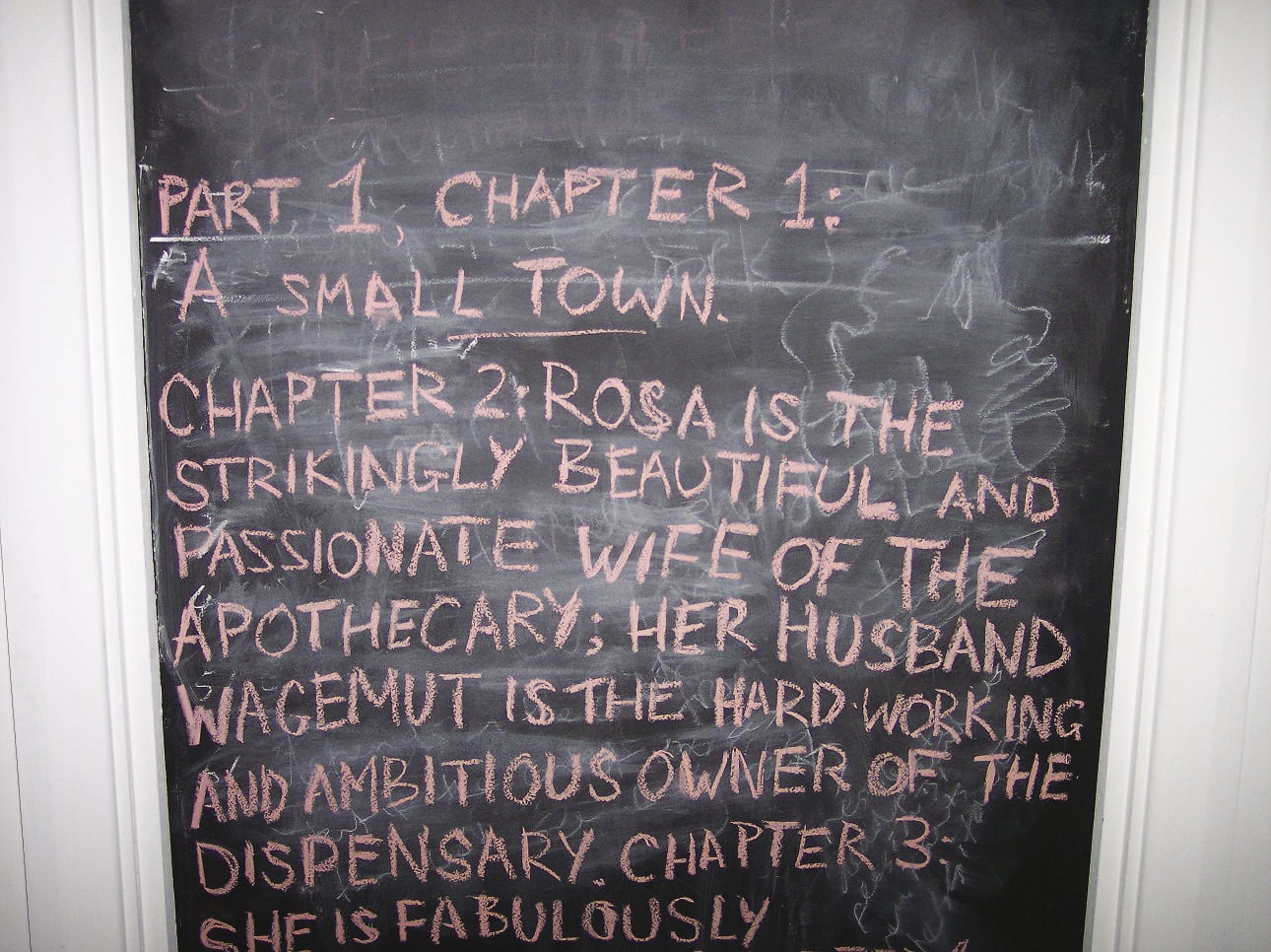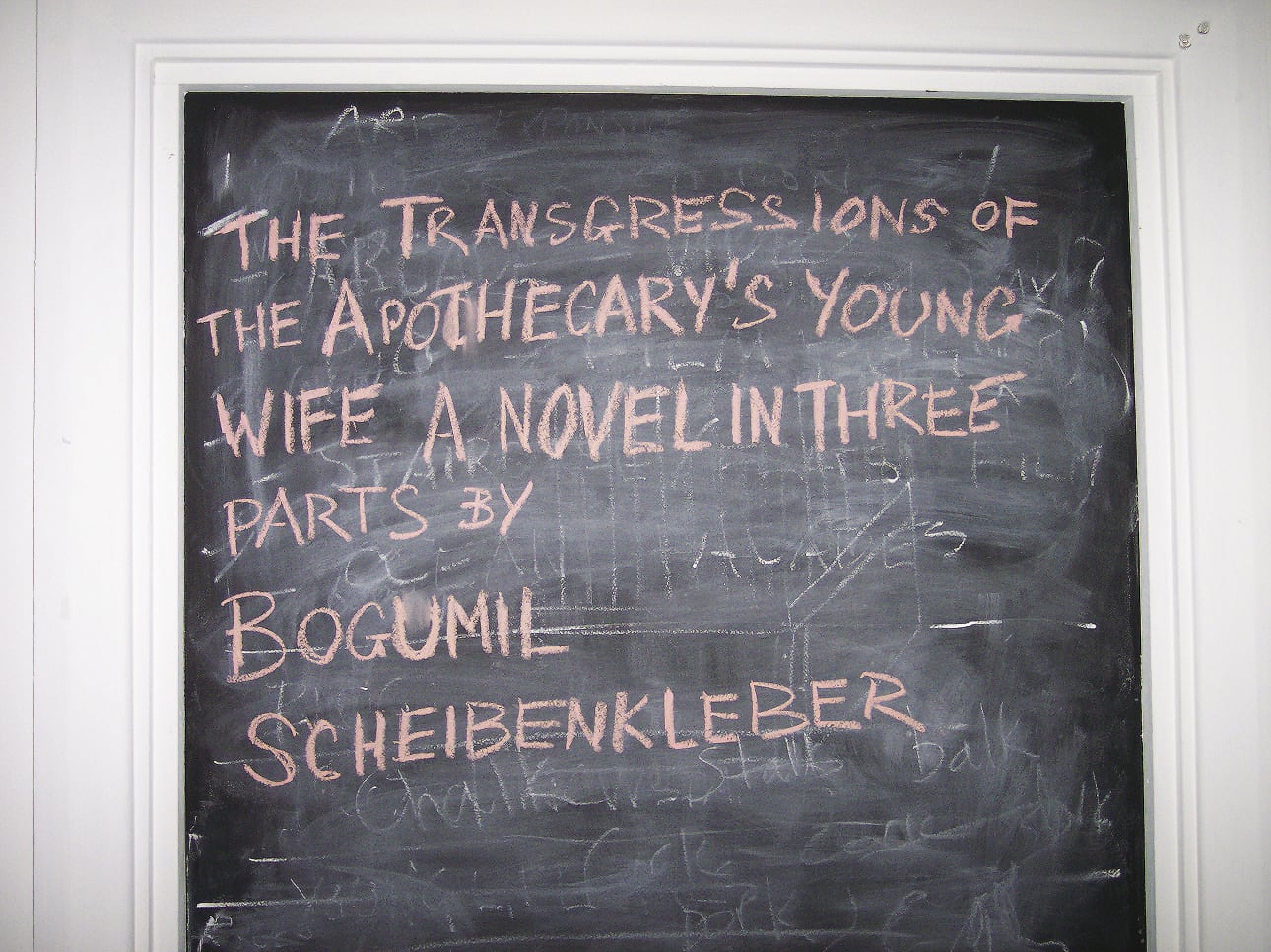History-History
The fictional device of creating self-contained worlds in which plots and characters can unfold is not so far removed from the artistic strategy of creating hermetic situations wherein new rationales are allowed to evolve, not necessarily plausible in the ‘outside world’ but reasonable enough in their own terms.
In German, geschichten means both history and narrative. And, indeed, ‘history’ and ‘story’ are etymologically related, their having once been the preserve of poets and bards recounting oral histories which would be amended and added with each retelling and with each generation. There was no anxiety, so far as we know, about how accurately the narrative recorded the details of the events or how true to period they were — relationships, power struggles, moral lessons were more important. Medieval artists depicting Biblical scenes had no hesitation in presenting events in ways that reflected both the times and the landscapes of those who made them, and for whom they were made. Each age reinterprets history in its own terms and to its own ends.
So it is a relatively recent phenomenon that insists history is ‘accurate’ and ‘truthful’, which frequently has the side effect of a misreading, or an over-reading, of history. This is something wryly illustrated in Jorge Luis Borges’ short story Pierre Menard, Author of the Quixote, which parodies the qualitative value placed on works attributed to this author or that artist — and, in this instance, the grandiose claims are made in a review of the works of a non-existent author. To ‘make a history of’ implies an embellishment or exaggeration, the distortion of a minor event into something worthy of recounting. It suggests that, for a long time, and informally, such augmentation was, and still is, expected.
The Non-Person
The reclusive and enigmatic author B Traven’s (assumed) assertion that the writer’s only biography should be his works is borne out by his intense secrecy and ambiguous life story. For, in spite of the best efforts of Will Wyatt and other biographers, doubt still hangs over his original identity and origins. His native country, the language he wrote in, whether he was one individual or many — all have produced reasonably plausible hypotheses but none of them mesh together entirely satisfactorily.
Traven’s story The Death Ship recounts the tribulations of one without identity. Gerard Gales is a sailor who, upon losing his identity papers in Antwerp, becomes a stateless person — one who exists but officially does not — and is thus subjected to a bureaucratic trial reminiscent of that detailed by Traven’s contemporary Franz Kafka in The Trial, which appeared just a year or two earlier. Literally forced off the land, Gales ends up as a stoker on a succession of dubious tramp-ships. History would prefer that he never existed, as any stateless person is a nuisance, an extra mouth to feed — someone who has been careless enough to be caught between two states, or to be a citizen of somewhere that ceases to exist.
The non-person does have some advantages, however, in being able to create a persona that is more suitable to their self-image. There has been some speculation that the events of The Death Ship were in part autobiographical, or at least fiction flavoured with fact. Traven’s earlier alias Ret Marut (whose short story A Writer of Serpentine Shrewdness is excerpted in the photographs), was believed to have fled Wiemar Germany sometime around 1923 and to have been arrested and imprisoned in London at the end of that year for being an unregistered alien. His appearance in Mexico in 1925 is unexplained (as was his in-depth knowledge of the country and its customs). His passage to Mexico could well have occurred as a tramp-ship’s stoker.
Mythical Creatures and Created Myths
Umberto Eco, in the introduction to The Role of the Reader, acknow-ledges the complex relationship of assumptions between the author of a text and the imagined reader:
When reading a Fleming novel or a Superman strip, one can at most guess what kind of reader their authors had in mind, not which requirements a ‘good’ reader should meet.1
Elsewhere, Eco describes what he calls ‘background books’, those books that inform our reading of the world around us. He does this by relating a story about Marco Polo and unicorns:
When Marco Polo visited China, he was obviously looking for unicorns … On his way home, from Java, he saw some animals that resembled unicorns, because they had a single horn on their muzzles, and because an entire tradition had prepared him to see unicorns, he identified these animals as unicorns. But because he was naïve and honest, he could not refrain from telling the truth. And the truth was that the unicorns he saw were very different from those represented by a millennial tradition. They were not white but black. They had pelts like buffalo, and their hooves were as big as elephants’. Their horns, too, were not white but black, their tongues were spiky, and their heads looked like wild boars’. In fact, what Marco Polo saw was the rhinoceros.2
There are also those fictions that constitute pluralised narratives: circumstantial evidence, planted evidence, a smoking gun. Inferences and fallacies, inviting us to speculate both on sequences of events and their relationship to one another.



